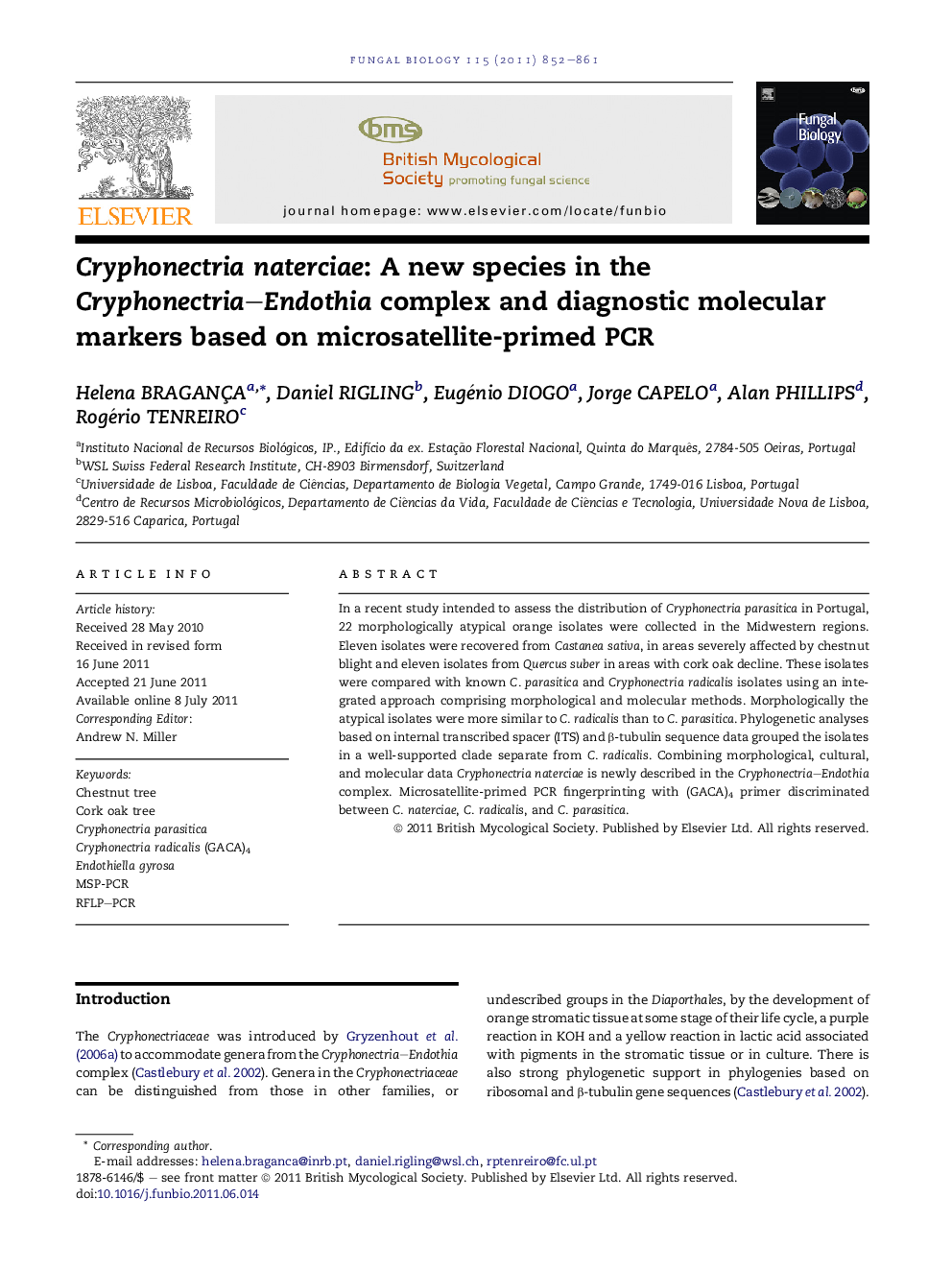| کد مقاله | کد نشریه | سال انتشار | مقاله انگلیسی | نسخه تمام متن |
|---|---|---|---|---|
| 4357297 | 1300049 | 2011 | 10 صفحه PDF | دانلود رایگان |

In a recent study intended to assess the distribution of Cryphonectria parasitica in Portugal, 22 morphologically atypical orange isolates were collected in the Midwestern regions. Eleven isolates were recovered from Castanea sativa, in areas severely affected by chestnut blight and eleven isolates from Quercus suber in areas with cork oak decline. These isolates were compared with known C. parasitica and Cryphonectria radicalis isolates using an integrated approach comprising morphological and molecular methods. Morphologically the atypical isolates were more similar to C. radicalis than to C. parasitica. Phylogenetic analyses based on internal transcribed spacer (ITS) and β-tubulin sequence data grouped the isolates in a well-supported clade separate from C. radicalis. Combining morphological, cultural, and molecular data Cryphonectria naterciae is newly described in the Cryphonectria–Endothia complex. Microsatellite-primed PCR fingerprinting with (GACA)4 primer discriminated between C. naterciae, C. radicalis, and C. parasitica.
► Cryphonectria isolates from Quercus suber and Castanea sativa were characterized.
► Cryphonectria naterciae sp. nov. is described based on morphological and molecular evidences.
► (GACA)4, clearly discriminates C. naterciae, Cryphonectria radicalis, and Cryphonectria parasitica.
► MSP-PCR and phylogeny approach can be used to identify species in Cryphonectria.
Journal: Fungal Biology - Volume 115, Issue 9, September 2011, Pages 852–861